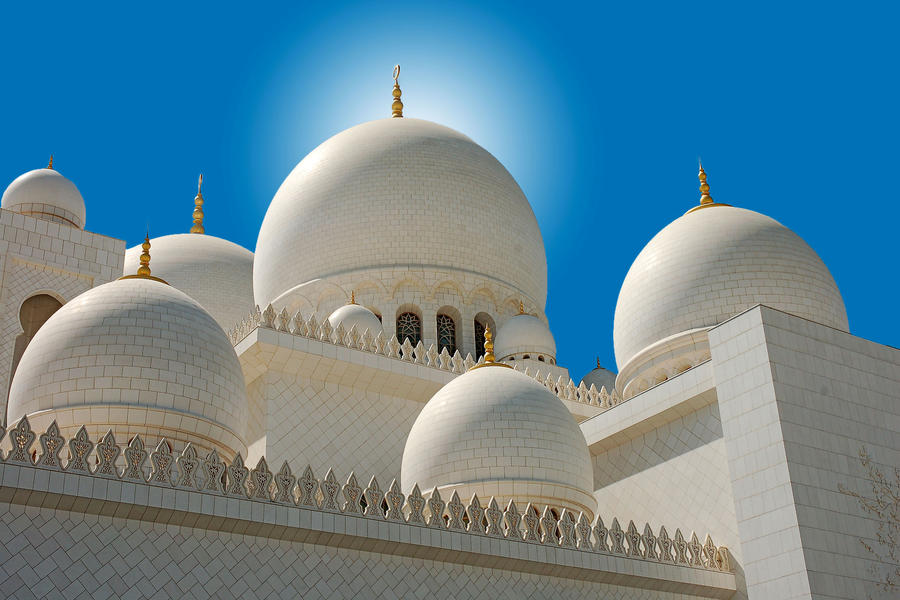That's funny. Since religion is the very reason Arab artists had to use calligraphy and not pictures. As even Rick Perry probably knows, Islam forbids depictions of humans or animals as "graven images."
There were some loopholes. Apparently, in the earliest days of Islam, that ban on pictures didn't exist. While Islam was rolling across the landscape and peacefully converting everyone (according to modern lib'rul believers), Xian churches often got peacefully converted into mosques.
Xian churches often came pre-decorated with depictions of Abraham, Moses, Jesus, et. al. Since those characters were also mentioned in the Koran and considered Muslim prophets, their depictions were usually left alone.
When I lived in Saudi Arabia and Egypt, I enjoyed wandering around mosques even though I am a Fundamentalist Atheist. Along with the calligraphy, mosques are often decorated with eye-popping mosaics using floral designs and wild geometric shapes. Some are downright psychedelic.
In Egypt at the Quitbay Mosque (located in Cairo's City of the Dead), I even saw an actual footprint of Mohammed preserved inside the mosque. That's what the caretaker said, anyway.
Many older mosques and minarets in Egypt have a direct link back to a famous piece of secular architecture. Those structures are built on a noticeable pattern - square bottom floor, octagonal middle floor, round top floor. That was also the design of the famous Pharos lighthouse in Alexandria, Egypt - built by Greek pagans in the Third Century BCE.
Actual Egyptian Muslims also showed me how the mosque designers and artists got sneaky. In the pic below, those balcony decorations represent...GASP!...people praying, with their arms raised to heaven. Many mosques have similar decorations. (That's the Sheikh Zayed Mosque in Abu Dhabi, the third largest mosque in the world):
